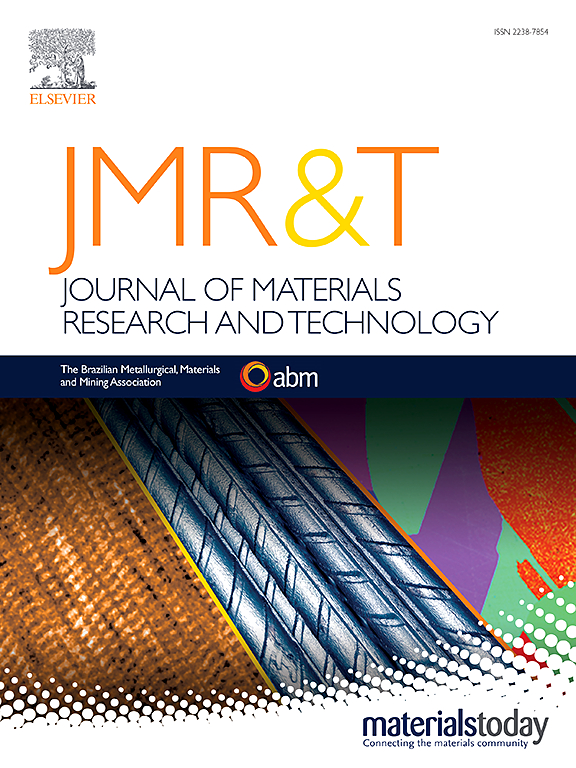Insight of the dendrite's deformation and fracture in large-sized single-crystal superalloy blades for the formation of slivers
IF 6.2
2区 材料科学
Q1 MATERIALS SCIENCE, MULTIDISCIPLINARY
Journal of Materials Research and Technology-Jmr&t
Pub Date : 2025-03-14
DOI:10.1016/j.jmrt.2025.03.120
引用次数: 0
Abstract
The manufacturing of single-crystal superalloy blades consistently aims to avoid grain boundary defects that compromise crystal integrity. Although slivers represent a significant type of grain boundary defect, their formation mechanisms remain inadequately defined. This study investigates sliver formation mechanisms, revealing that slivers in single-crystal blades extracted at a variable rate originate from dendritic fractures. Conversely, slivers in blades extracted at a constant rate stem from dendritic deformation. Temperature field simulations indicate that the cooling rate for blades withdrawn at variable rates varies significantly, generating higher thermal contraction stresses compared to those withdrawn at a constant rate. This increased stress precipitates dendrite fractures, leading to sliver formation. Following dendrite fractures or deformation, shrinkage cavities emerge, resulting from the obstruction of liquid flow by dendrite arms. Moreover, the impact of alumina protrusions in the mold on sliver formation is explored. This research advances our comprehension of dendritic evolution in sliver formation and offers theoretical insights for mitigating sliver defects in single-crystal blade production.
大尺寸单晶高温合金叶片中枝晶变形与断裂对条子形成的影响
单晶高温合金叶片的制造始终致力于避免影响晶体完整性的晶界缺陷。虽然条子代表了一种重要的晶界缺陷类型,但它们的形成机制仍然没有充分的定义。本研究探讨了银条的形成机制,揭示了以可变速率提取的单晶叶片中的银条起源于枝晶断裂。相反,以恒定速率提取的叶片中的条子源于枝晶变形。温度场模拟结果表明,与恒定速率下的叶片相比,可变速率下的叶片冷却速率变化显著,产生的热收缩应力更高。这种增加的应力使枝晶断裂,导致银条形成。在枝晶断裂或变形后,由于枝晶臂阻碍液体流动而产生缩孔。此外,还探讨了结晶器中氧化铝突出物对条子形成的影响。这项研究促进了我们对条子形成过程中枝晶演变的理解,并为减轻单晶刀片生产中的条子缺陷提供了理论见解。
本文章由计算机程序翻译,如有差异,请以英文原文为准。
求助全文
约1分钟内获得全文
求助全文
来源期刊

Journal of Materials Research and Technology-Jmr&t
Materials Science-Metals and Alloys
CiteScore
8.80
自引率
9.40%
发文量
1877
审稿时长
35 days
期刊介绍:
The Journal of Materials Research and Technology is a publication of ABM - Brazilian Metallurgical, Materials and Mining Association - and publishes four issues per year also with a free version online (www.jmrt.com.br). The journal provides an international medium for the publication of theoretical and experimental studies related to Metallurgy, Materials and Minerals research and technology. Appropriate submissions to the Journal of Materials Research and Technology should include scientific and/or engineering factors which affect processes and products in the Metallurgy, Materials and Mining areas.
 求助内容:
求助内容: 应助结果提醒方式:
应助结果提醒方式:


